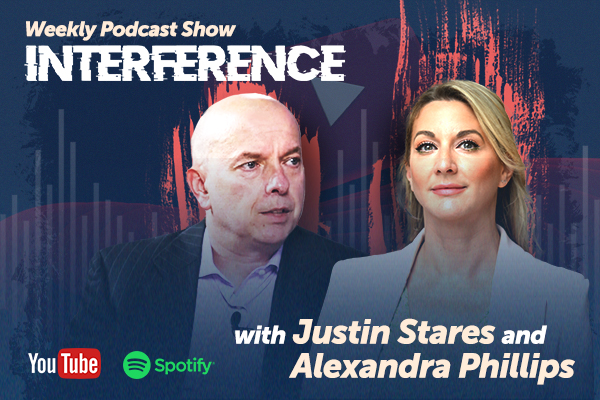I always found the story behind the “Made in Germany” label interesting. Originally the term “Made in Germany” served as a derogatory label rather than a hallmark of excellence. Introduced by the British Parliament in 1887, it aimed to alert consumers to the presence of so-called ‘inferior’ German goods flooding the market. The immediate associations were decidedly negative—cheapness and poor quality. Fast forward to today, however, and this designation has undergone a remarkable transformation, evolving into a global symbol of superior craftsmanship. This shift can be traced back to the late 19th century when German industry significantly enhanced the quality of its output. As a result, the “Made in Germany” label has become synonymous with reliability and excellence, securing its place as one of the most esteemed trademarks worldwide. This evolution not only highlights a significant turnaround in perception but also underscores the relentless pursuit of quality that once characterised German manufacturing today.
In the relentless hunt for profits and markets as well as a permanently changing regulatory environment we have forgotten that prices are but one aspect of a good. If German (or European) exports to the American market are hit with tariffs, one answer should be a rediscovery of quality – and creating the necessary conditions within Europe so our companies can once again become world leaders in manufactured goods. I am still undecided as to what the long-term consequences of Donald Trump’s tariff policies will be, but I am cautiously optimistic. First of all, negotiations for new tariff agreements will take place, and it is encouraging that Elon Musk has already made his preference for a US-EU free trade agreement known. Secondly, the global division of labour that was very beneficial during the era of globalisation that started in the 1990s can no longer be maintained due to a changing geopolitical environment. The new Cold War between the US on one side and China-Russia on the other is a new reality that at some point had to impact global trade. If one looks at the design of the US tariffs, they initially almost seem as picked by throwing darts at a board. A closer inspection, however, shows that they have been put together according to a strategy that has been made public by the Trump campaign at least since February 2023. In Agenda 47, “Trump announced his America First trade plan to replace the disastrous Biden system of punishing domestic producers and rewarding outsourcers with a new pro-America system of universal baseline tariffs on most foreign products that rewards domestic production while taxing foreign companies.”
The minimum of 10 per cent tariffs that have been imposed on the UK and most of Latin America are the “universal baseline” created for friends and foes alike. The numbers that deviate from this value are the actual indicator of a potential strategic imperative: Latin America was treated quite leniently because Washington looks at an attempt of consolidating the Western hemisphere under American leadership. If the rest of the world is hit with tariffs above 10 per cent then there are incentives not only to move production to the US proper, but also to Latin America. It would still be cheaper to produce in Mexico and then export to the US with a 10 per cent tariff compared to producing in Vietnam and having to face a levy of 46 per cent. The tariffs are a reflection of which geographical areas the Trump administration wants to (relatively) strengthen or weaken. Asia has been hit particularly hard, not least because Washington wants to force the nations in the region to decide with whom they want to side in a future conflict: the US or China.
The 20 per cent tariffs on the EU and the 10 per cent on the UK show that the Old Continent has not been entirely written off. At the time of writing, over 50 nations have reached out to the US administration to start negotiations, and the EU should do the same, with the explicit goal of a US-EU free trade agreement. If done right, trade does not have to be a zero-sum game, and there is a lot of potential for expanding, not reducing, the economic interaction between Europe and the US. To give an anecdotal example: US fast food chains have established themselves quite successfully in Europe, because there is plenty of consumer demand for McDonalds et al. on this side of the Atlantic. Similarly, the German discounter Aldi has opened numerous stores in the United States, a reciprocal process that benefitted consumers everywhere. And before the usual objection that Europe does “not need” American fast food, nobody is forced to consume it. I live in Vienna and have never visited a Starbucks or Dunkin Doughnuts, but other people seem to enjoy them and I see no reason to deny them their pleasure. I would, however, like to see more Austrian bakeries in the United States, and lowering all trade barriers would make it much easier for European artisanal food to enter the US on a broader scale.
Also, just as a footnote, this exchange often leads to an improvement of the quality of otherwise low quality products. McDonalds, for example, has invested heavily in both food quality (via sourcing locally) and the ambience of its restaurants in Europe. Ironically, trade is not leading to the Americanization of Europe, but also to the Europeanisation of America – or at least their franchises. I would like to see more of this, and having EU businesses starting their own franchise attempts in the United States would be a good thing.
This brings me back to my original point: Europe has been hunting for export markets and cheap labour in China, but a new policy should emphasise quality – and the expansion into the Americas. Such a realignment will take skilled negotiations as well as the willingness to reform the regulatory monstrosity Europe has become. European companies must find cheap energy and an environment conducive to entrepreneurial activity. None of this would be impossible, and I would argue that the Trump tariffs are not a catastrophe but could be a much needed wake up call.






US foreign policy? You have to wonder if America is even trying